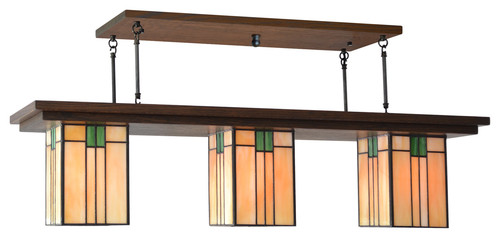
Craftsman style is known for warm, earthy colors, well-crafted woodwork, and artistic details, as seen in this kitchen by Wood-Mode Cabinetry.
There are very few architectural styles in America as pervasive as Craftsman. Also referred to as Arts & Crafts, Mission, or bungalow style depending on where you are, Craftsman architecture, grew out of a European movement that challenged the ornate frivolity of Victorian style at the end of the 19th century. By 1905, the movement had taken a firm root in America, and influenced architects and designers, as well as home decor artisans like Cincinnati's own Rookwood Pottery. Read on for a look at how a Craftsman look can be achieved in the kitchen.
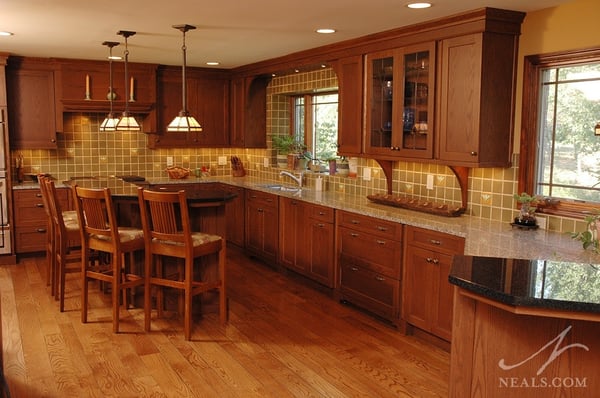
Cabinetry should be simple and practical to conform to the principles of Craftsman design, and should take center stage in the kitchen as the backbone of the style.
Cabinetry
Craftsman design emphasizes two primary principles: that all objects should be a marriage of form and function (not one over the other), and that materials should be used as naturally as possible. In the kitchen, cabinets should be used to carry these ideas. While richly-stained, solid oak cabinets are the epitome of classic Craftsman style, this doesn't have to be a limitation for your personal tastes. The key is to use a cabinet door style that is in keeping with Craftsman design, such as Wood-Mode's Sturbridge Recessed door. Even painted white, this style conveys a clear early 20th century feeling that can then be enhanced with other Arts & Crafts details.
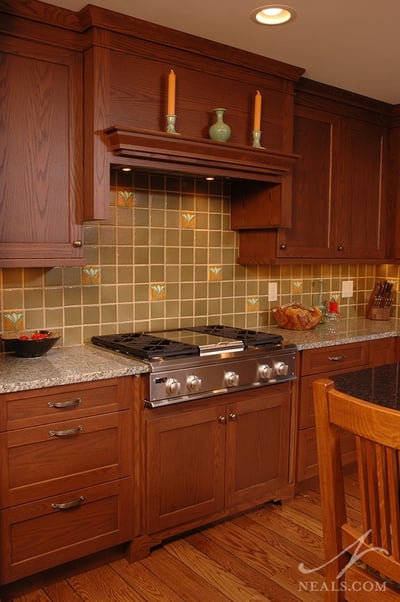
In this Neal's kitchen remodel, mossy green field tiles are paired with randomly placed painted tiles featuring a stylized ginkgo leaf design- a classic Craftsman motif.
Tile
The movement supported a wide range of artisan crafts, championing the hand-made tile over the manufactured. Ceramics in particular benefited from the rise and popularity of Craftsman style, not just in the area of home decor, but in tile work as well. Arts & Crafts tiles are earthy and imperfect. They are created using hand-made molds, and rely on natural glazes that produce soft colors. Tile backsplashes rule in Craftsman kitchens, and should be designed to take full advantage of the available space for the best effect. Pairing molded or hand-painted tiles with plain field tiles creates texture and interest.
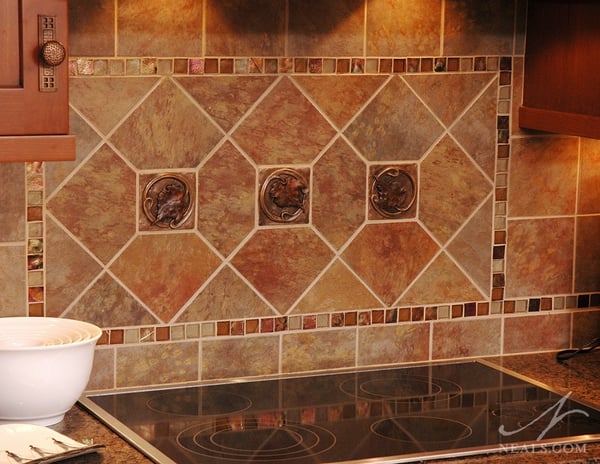
A mixture of natural stone tiles, artisan glass mosaic tiles, and accent tiles featuring a leaf design create an up-to-date take on this Craftsman backsplash.
Natural Stone
If the rustic look of Craftsman tile isn't your taste, natural stone has you covered. The emphasis on using natural materials as simply as possible makes the use of natural stone perfect for a Craftsman kitchen. Slate, with a variable color range and texture, is right on target here, but any natural stone will do. This goes for counters as well. Granite or soapstone are appropriate choices that offer the earthy colors that a successful Craftsman kitchen needs.
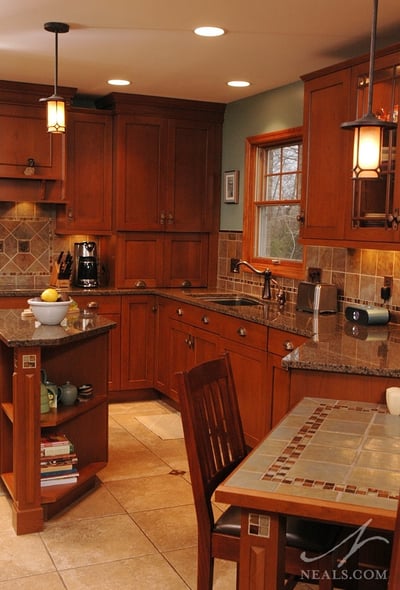
In this Neal's kitchen remodel, open shelving at the end of the small island and a table-height peninsula are built-in elements reminiscent of the classic style.
Built-ins
One interesting aspect of historic Craftsman style is that many functions or actions within the home were dictated by the home's design. Built-ins reigned supreme for everything from bookshelves to chairs. The Arts & Crafts movement was intended by its founders to dictate a lifestyle, so that all aspects of a person's life and environment matched the movement's ideals. In our modern lives, we prefer the freedom of changing our minds and doing things differently from one day to the next if we'd like, but the concept of built-ins is a crucial element of Craftsman style. These days, we can nod to this by using built-in seating and shelving without too strong of a lifestyle commitment. The showroom at Neal's Design Remodel displays craftsman built-ins and tile surrounding a fireplace in this video.
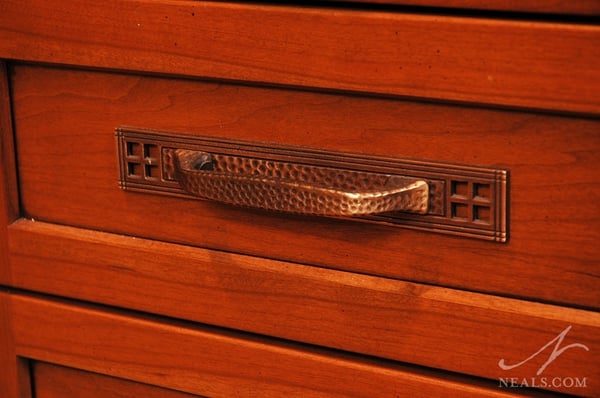
Hardware with a matte finish and a hand-crafted quality are at home in this Craftsman kitchen.
Utilitarian Hardware
Drawer pulls, cabinet knobs, faucets, and any other hardware and fixtures in the kitchen should have a definite leaning toward utility. Look for styles that are chunky and easy to handle. Dark, warm-toned patinas, such as oil-rubbed bronze or antiqued brass, are ideal. Avoid anything with sheen, which comes from a more modern taste.
Lighting
One final essential touch to the Craftsman-style kitchen is to include artisan glass, either in the form of lighting or in the windows. Like ceramics, decorative glass found a fitting niche in the Arts & Crafts movement, and filled it typically with geometric shapes, dark lines, and solid, blocked colors. If a stained glass element doesn't suit you, look for lighting with frosted glass panels in geometric wooden or dark metal fixtures.

